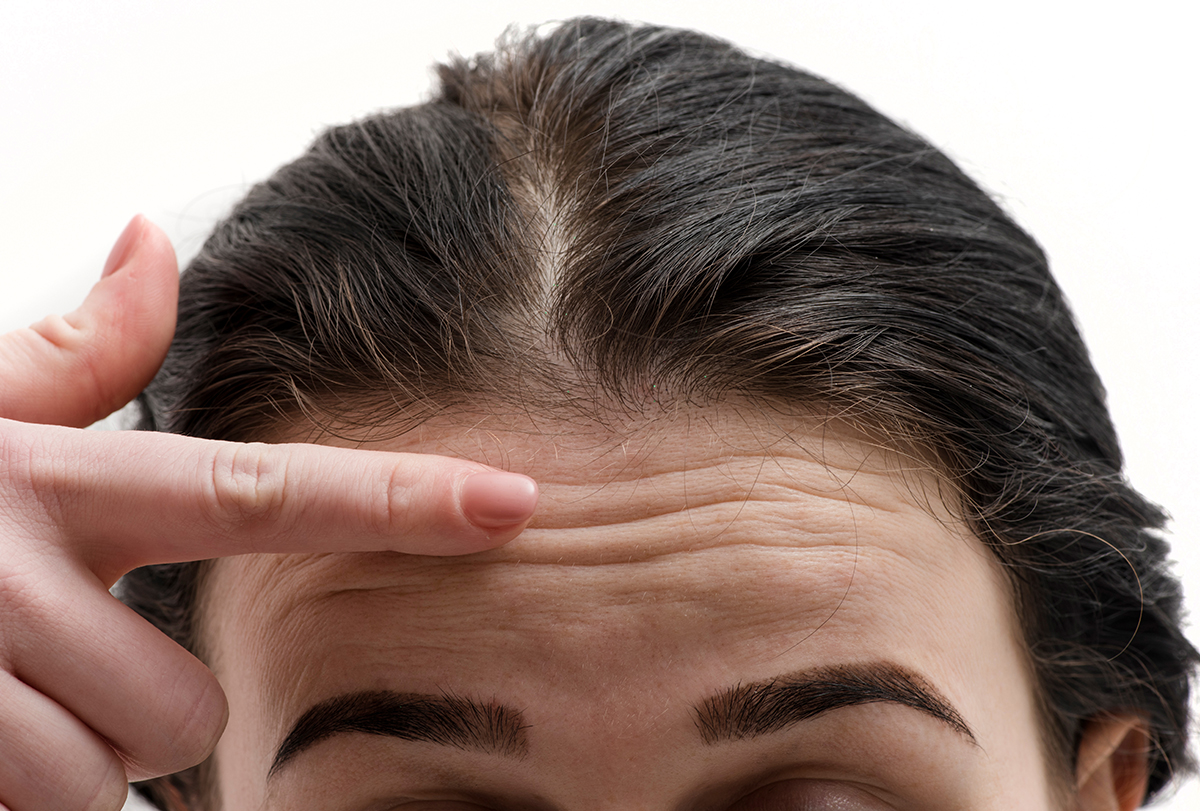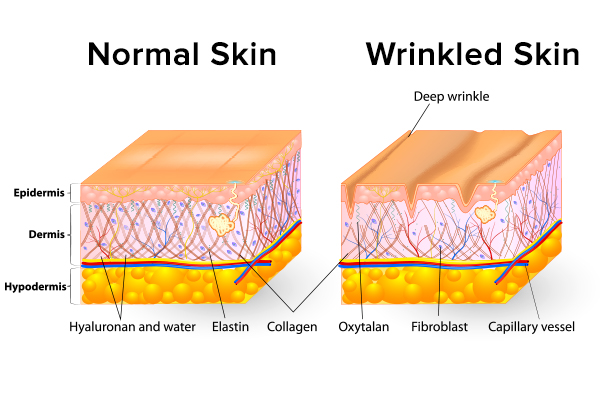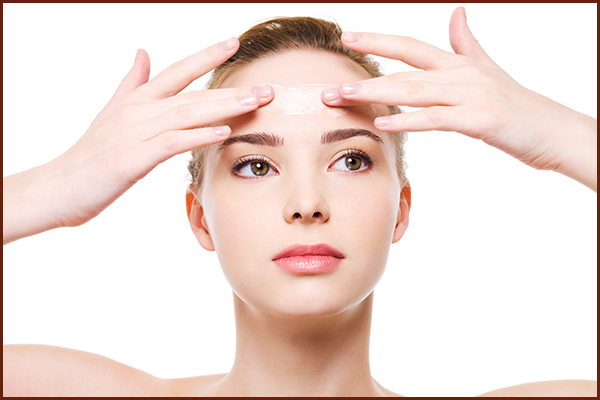In this article:
Facial expressions are formed by the contraction and stretching out of facial muscles. When these muscles move, they pull in the overlying skin. This repeated action on the skin is further compounded by the natural loss of skin elasticity and volume with advancing age.

Poor diet, an unhealthy lifestyle, and lack of skin care can make your skin age much faster. While there’s only so much you can do to fight natural skin aging, there are many ways to control the preventable forms of skin damage.
You may not be able to get rid of wrinkles altogether once they appear, but you can make them less visible through proper skin care and skin treatments.
What Wrinkles Really Are
Skin is mainly composed of two structural proteins called collagen and elastin, which serve their own specific purpose. Collagen provides volume to the skin, while elastin is responsible for its elasticity. Elasticity refers to the ability of the skin to stretch without becoming loose.
As one grows older, there is gradual decline in the production and strength of these structural components. As a result, the existing collagen breaks down easily and your body doesn’t produce enough new collagen to replace it.
At the same time, the skin fails to retain its shape due to the loss of elastin and begins to crease or wrinkle. Thus, your skin tends to become thin and saggy with advancing age. (1) This natural degeneration of skin fibers is further accelerated by environmental, hormonal, nutritional, and medical factors, which are discussed in detail below.
Causes of Forehead Wrinkles

Skin wrinkles can be the result of a combination of factors, some of which are intrinsic and beyond your control, while others are extrinsic and can be reduced with proper skin care.
As the name implies, intrinsic causes occur inside the body and damage the skin from within, whereas extrinsic causes attack the skin from the outside. These factors affect the skin in different ways, such as by inducing epidermal thinning, loss of elasticity, and other forms of skin degeneration that ultimately lead to the appearance of fine lines and wrinkles. (2)
Natural or medical causes:
- Aging
- Low estrogen levels in menopausal women (3)
- Medical conditions such as ptosis of the upper eyelid (4) and wrinkly skin syndrome
- Increasing number of pregnancies
Environmental and lifestyle-related causes:
- Sun exposure without wearing sunscreen
- Smoking
- Exposure to environmental pollutants
- Problematic sleeping postures that put excessive pressure on facial skin (5)
- Repetitive facial expressions that cause your forehead muscles to tug and pull at your skin
- Inadequate water intake or dehydration
- Poor diet leading to nutritional deficiencies
- Psychological stress
Signs and Symptoms Associated With Forehead Wrinkling
Forehead wrinkles may be accompanied by the following symptoms:
- Dry skin
- Sagging skin
- Unusual facial characteristics
- Downward-slanting eyes
- Age spots
- Spider veins
- Uneven complexion
Medical Treatment for Forehead Wrinkles

Depending upon the depth and extent of your forehead wrinkles, your doctor may recommend one or more of the following treatments:
1. Prescription-strength ointments
The doctor may prescribe topical retinoids, such as retinol or tretinoin, to increase collagen production and thereby accelerate skin regeneration.
Retinoids are derived from vitamin A and are therefore full of antioxidants. These antioxidants help reduce free radical activity and the oxidative damage caused by them to skin cells. They also promote blood circulation for healthy-looking skin.
Retinoids can make your skin extra sensitive to the sun and other irritants, so you must use them in the prescribed dosage along with the recommended skin care. Moreover, this compound breaks down when exposed to any kind of light, so it’s best to apply it at night before sleeping. Although retinoids are easily available over the counter, you should only use them as directed by your doctor.
Additionally, your doctor may recommend topical antioxidants such as vitamin C-based gels or creams to enhance collagen synthesis and curb the underlying inflammation responsible for its breakdown.
2. Skin resurfacing procedures
Noninvasive clinical treatments such as laser therapy, (6) chemical peeling, (7) dermabrasion, microdermabrasion, microneedling, (8) and IPL photo-rejuvenation help exfoliate wrinkled skin from the surface to reveal newly formed, healthy layers from underneath.
These treatment modalities use different peeling agents such as laser beam, chemicals, needles, and other specialized tools to remove the dead and damaged epidermal cells while the surrounding tissues remain intact.
They can differ in their intensity and healing time, and your doctor will recommend the appropriate treatment depending upon your skin condition. You may require multiple sessions to see visible results.
Note: Ablative laser facial resurfacing is known to cause skin discoloration in some patients and is, therefore, not recommended for dark-skinned people. (9)
3. Botox injections
Injectables and fillers are minimally invasive and include Botox injections. They have become a popular cosmetic procedure to smoothen out fine lines and wrinkles.
The procedure involves directly injecting small amounts of a neurotoxin called botulinum toxin into the overactive facial muscle under the wrinkled area. These muscles repeatedly contract to form facial expressions, which gradually loosen and crease the overlying skin, thus forming wrinkles.
The botulinum toxin works by relaxing the targeted muscles in a localized manner, thus smoothening the skin above it to reduce the appearance of wrinkles. Botox injections are fairly noninvasive but may not prove effective against deep-seated wrinkles.
4. Derma fillers
Another noninvasive injectable that can help tighten your wrinkly skin is a derma filler. It involves injecting hyaluronic acid into the skin to make it appear more full and supple. It addresses the loss of skin volume that leads to the formation of wrinkles and folds.
Thus, derma fillers help tighten loose, wrinkly skin, but the result usually lasts for only 6 months.
5. Surgical procedures
If all other measures fail to provide desirable results, the doctor may resort to invasive surgeries such as skin-tightening procedures and forehead or brow lift to smoothen out the wrinkled skin.
Risk Factors
The following factors can increase your risk of developing forehead wrinkles:
- Aging
- Smoking
- Skin that tans easily
Complications Related to Forehead Wrinkles

Forehead wrinkles are nonthreatening by themselves, but they are associated with the following complications that can present a serious risk to your health:
- Excessive DNA destruction, which can lead to cancer.
- Other symptoms of sun-induced skin damage such as hyperpigmentation.
- Increased psychological distress that can compromise skin renewal and exacerbate wrinkling.
- Deep-seated forehead wrinkles can be a sign of underlying cardiovascular problems, which require medical attention.
When to See a Doctor
Forehead or facial wrinkles in general are not really a health scare, but they can negatively affect your appearance and self-confidence.
Skin aging is an unavoidable part of life, but it can become a source of stress if it occurs prematurely. Stress, in turn, is bad for your skin health. It leads to more frowning and inhibits skin repair, both of which can make your wrinkles worse.
Visit a skin specialist if you feel that your forehead wrinkles are making you look older than you actually are or if they become coarser with time despite proper skin care.
Final Word
Wrinkles are a natural part of skin aging, which cannot be avoided completely but can be minimized through proper skin care from an early age. In fact, the right time to treat skin aging is before it occurs.
Once formed, wrinkles and fine lines can be impossible to reverse without some sort of minimally invasive skin-tightening procedure. And even the best fillers, surgery, or facelift can end up making your skin highly sensitive and your face look unnatural.
For this reason, you should start treating your skin with antiaging products right from the mid-twenties to keep it young and taut for longer. The sooner you get to it, the longer you can delay the appearance of wrinkles and fine lines. Just like you can’t turn back time, you can’t reverse skin aging. So, prevention is the best cure as far as skin aging is concerned.

- Was this article helpful?
- YES, THANKS!NOT REALLY


